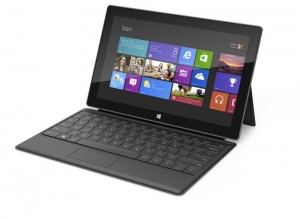 For a couple months, I’ve had a TweetDeck column focused on Surface Pro tweets, and that column has seen a steady stream of curious consumers and anxious productivity workers, clamoring for more information about the new hybrid tablet/PC. You can imagine how that column has been inundated with tweets in the past week, and you might also imagine how it exploded a couple nights ago, when the embargo for reviews of the new Microsoft device was lifted, and tech reviewers everywhere went live with their thoughts.
For a couple months, I’ve had a TweetDeck column focused on Surface Pro tweets, and that column has seen a steady stream of curious consumers and anxious productivity workers, clamoring for more information about the new hybrid tablet/PC. You can imagine how that column has been inundated with tweets in the past week, and you might also imagine how it exploded a couple nights ago, when the embargo for reviews of the new Microsoft device was lifted, and tech reviewers everywhere went live with their thoughts.
I was tuned into Twitter that night, watching reactions pour forth, and I read most of the coverage with great curiosity. You’ll recall that I have a strong interest in the Surface Pro as the kind of device I’ve been hoping for—a media consumption tablet that is also a very capable productivity device. I wrote about that promise, pretty optimistically, in my article “The Microsoft Surface or the Apple iPad at Work?” As more information became available about Surface Pro—specifically about how Microsoft made necessary compromises in some areas to permit functionality in other areas—my optimism was tempered, as I wrote in “Surface Pro: Weighing the Pros and Cons.”
Essentially, I was coming to terms—along with other potential buyers—with the difference between my perfect vision of Surface Pro and the necessary realities of such a powerful device. Yes, the device would be pricey; this thing is, after all, comparable to a high-end Ultrabook. Yes, battery life would not equate to that of a pure tablet; that’s because Surface Pro is far more than just a tablet. Yes, it would be heavier than a media tablet; that’s because it’s not only a media tablet. Yes, the Windows 8 OS would take a significant amount of internal storage; that’s because this is not just a tablet, but a PC with USB connectivity in the age of cloud storage. These are all items that were expected and known ahead of time—call them the necessary hardware compromises for a brand-new category of device that promises to bring us a no-compromises computing experience.





